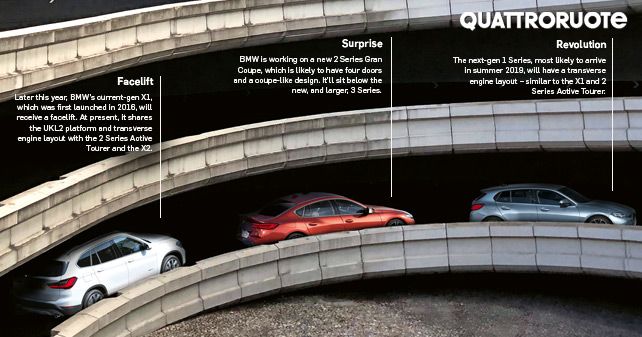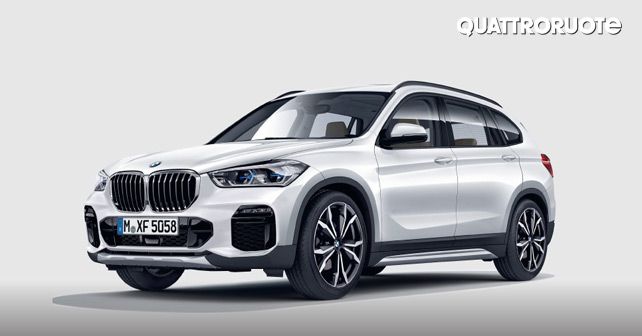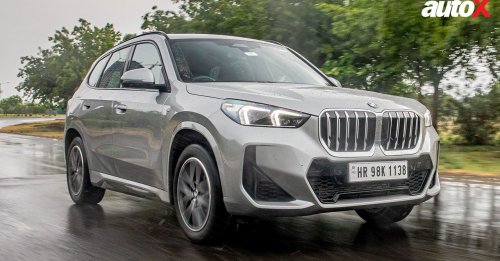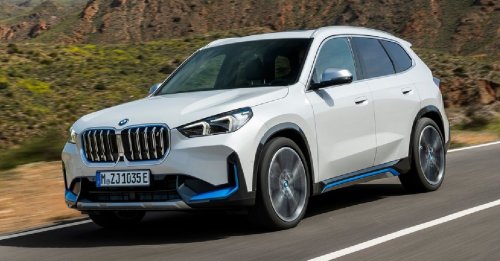From the 1 Series and X1 to the new 2 Series Gran Coupe, there’s a radical transformation happening at the entry-level end of the BMW range.
Things have been rather busy in Bavaria lately. In fact, there’s been a lot happening across the model range. In India, for instance, we’ve recently got the X4, with its coupe-like design, and we’re expected to get the facelifted 7 Series, a brand new 8 Series, as well as BMW’s new flagship – the X7 – all in the next few months, not to mention the brand new 3 Series. But, there’s an equal amount of action at the entry-level end of BMW’s range.
Now, the 1 Series was launched in India a few years ago, but it didn’t work in our market – which hasn’t really taken to luxury hatchbacks as yet. What has been successful, though, is BMW’s entry-level SUV – the X1. BMW also has a 2 Series now, so it’ll be interesting to see how these models evolve and if they’re likely to become more suitable for India going forwards.
The next generation of the 1 Series will be nothing short of a technical revolution, and will transition to being front-wheel drive with a transverse engine layout. There’s no doubt that this is a radical step, but it’s hardly surprising. In fact, it’s a logical consequence of the conversion of other entry-level models – such as the 2 Series Active Tourer and Gran Tourer (2014 and 2015, respectively) and X1 (2016) – to front-wheel drive. The latter is based on the UKL2 platform. The upcoming 1 Series, however, will go a step further – it’ll be based on the FAAR platform.
The road to electrification
The FAAR platform not only distinguishes the new 1 Series from the current model, but also renders it both practical and sporty at the same time. How? Well, by sending all the power to the front wheels! However, there’s no need to mourn the demise of rear-wheel drive as yet. You see, the new FAAR platform will also provide the option of the xDrive all-wheel drive system. In fact, the platform will also allow the inclusion of plug-in hybrid tech, putting on the table the possibility of housing larger batteries and, more importantly, an electric motor at the rear. This will be a step in the direction of the production of zero-emission cars.
The presence of a transverse engine architecture on the 1 Series will bring about changes in terms of styling, comfort and handling. Now, regarding the last point – something that’s very dear to purists – we would rather reserve our opinion until we’ve had a chance to test the new car properly.
Given BMW’s changing philosophy – to front-wheel drive cars from a traditional rear-wheel drive format – we’re hopeful that these models will live up to our (hyped-up) expectations.
Different proportions
The new 1 Series will undergo radical changes in terms of design. The absence of a longitudinal engine layout means that the front will be shorter, which, consequently, will positively affect the space in both the cabin and the boot – the latter is not really a strong suit of the current 1 Series. The body will be a mix of concave and convex surfaces, along with a never-seen-before combination of roof and tail. Needless to say, the proportions of the car will be quite different from the current model.
On the mechanical front, along with rear-wheel drive, the in-line six-cylinder is also likely to disappear from the new ‘1’ – for the simple reason that it’s not compatible with the new architecture. This means that it’s likely to get 1.5 and 2.0-litre, three-and four-cylinder engines, both petrol and diesel, and even plug-ins.
Coming to the X1 (below left), which is all set to receive a mid-life facelift – but nothing too extensive or complex. Most likely, it’ll have an altered front, especially around the headlights and grill. The interior, however, is expected to receive considerable changes, in terms of both equipment and infotainment.
Now, as you can see in the above rendering, the 2 Series Gran Coupe is likely to have four doors, a streamlined design and a length of around four-and-a-half metres – basically a younger sibling of the 4 Series Gran Coupe. It’s not confirmed as yet, but, this car, scheduled for 2020, is likely to also be underpinned by the FAAR platform. And this means that it’ll also be front-wheel drive (with the option of all-wheel drive).
The 2 Series Gran Coupe will be positioned between the 1 Series hatchback and the 3 Series sedan, which, with its latest edition, has evolved in terms of both size and quality – thereby creating just the right amount of space for such a variant of the new 2 Series below it. Essentially, the 2 Series Gran Coupe is a variant that’s been developed with the aim to cover every possible niche in the market – a bit like what Mercedes is with doing with its CLA.
IT RESPONDS
At this year’s CES in Las Vegas, BMW, in addition to the Vision iNext concept and other mobility solutions for the year 2021, also presented its new intelligent personal assistant with new and improved functionality. And this new system is likely to be present in the 1 Series. The system can be activated by the phrase, ‘Hey BMW,’ and can carry out a number of activities for the driver, without causing any driving distractions. The virtual assistant is also advanced enough to learn from the driver’s habits & routine, and aims to make spending time in the car as comfortable and effortless as possible.
© Riproduzione riservata
Also read:





























Write your Comment